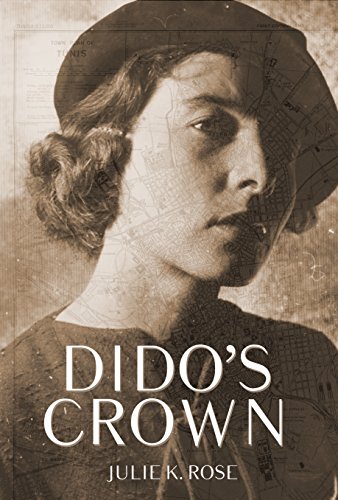Dido’s Crown
In a narrative that hopscotches across continents and zigzags between 1916 and 1935, Mary Wilson—don’t call her Mrs. MacPherson—races through North Africa, France, and the Mediterranean, usually at gunpoint, to find a mysterious package that her husband, John MacPherson, has sent her to Tunisia to recover.
Mary’s old friends Tom Harris and Will Simpson, also seeking the package, are intimately familiar with its contents. So is their colleague-in-arms, Collins, and French-Tunisian antiquities dealer Alain Saidini. But to reveal the nature of those contents would be a hanging offense, so they keep Mary in the dark. British intelligence desperately needs that package, and German, French, and Tunisian groups would kill to obtain it, as will Mary when she finally learns what’s in it and why her husband wants it so badly.
Author Julie K. Rose brings the reader into the story-world through evocative scenes detailing the architecture, culture, horticulture, and history of these intriguing locations. Character development, however, is less inspired: Tom, Will, Alain, Mary—and even a woman’s hat—are all “dashing.” Dialogue, too, is standard romance fare: “‘I really should hate you,’ she whispered.” And: “‘Go away, Collins,’ she said, her throat tight. She would be damned if she sobbed in front of him. Damned.”
Repetitive words and phrases flatten the scenes they are intended to enliven. “Damn,” for instance, appears over seventy times, as damned/damnable/damn you, etc. Clichéd reactions—hands shaking, jaws clenching, feet stamping—send the reader skipping over action scenes. And the 1930s tough talk—“Turned the tables haven’t they?” and “Jail would be so unpleasant, would it not?” turns Dido’s Crown into a mash-up of Humphrey Bogart movies, dulling the “thriller” aspect of this historical thriller-romance and obscuring the evolution of a subtle romantic subplot which, with fresh prose, would have been compelling.










